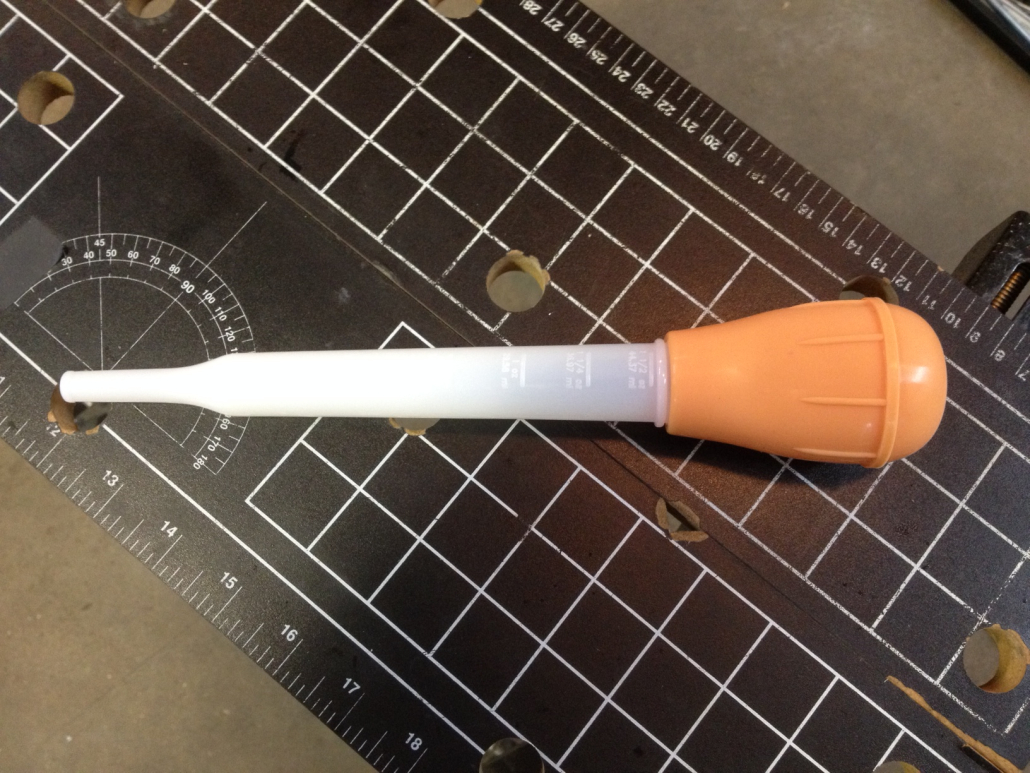Having clean, fresh brake fluid is essential for safe braking, but paying a mechanic to flush your brake system can be expensive. Luckily, there’s a simple DIY method using an everyday kitchen tool – the humble turkey baster. Here’s a guide to using a turkey baster to flush your brake fluid, potentially saving you money on mechanic fees.
Why Flushing Brake Fluid is Important
Over time, the brake fluid in your car’s hydraulic system absorbs moisture and contaminants. This leads to a few problems
-
The water lowers the brake fluid’s boiling point, causing potential brake failure from fluid vaporization
-
Contaminants corrode metal brake components, potentially causing leaks or complete failure.
-
Rubber brake parts swell and deteriorate.
Replacing some of the old contaminated fluid helps, but flushing the entire system is optimal for safe braking. The general recommendation is a complete brake fluid flush every 2 years or 30,000 miles.
The Turkey Baster Method
Replacing all the old brake fluid usually requires fancy equipment to pump fresh fluid through while drawing old fluid out. Or you can pay a mechanic $100 or more to do it. But there’s a simpler DIY technique that uses a basic kitchen tool – the turkey baster.
Here are the steps to turkey baster brake bleeding:
Supplies Needed
-
Turkey baster (a new one reserved for car work)
-
Brake fluid (DOT 3 or DOT 4 for most vehicles)
-
Clear container like a bottle or jug
-
Rag, drip pan and gloves – brake fluid damages paint
Drain the Master Cylinder
The master cylinder reservoir holds brake fluid that feeds the entire system. Draining it first removes some old fluid.
-
Locate the master cylinder under the hood, usually near the brake booster.
-
Use the turkey baster to suck old fluid from the reservoir.
-
Squirt it into a container, not fully filling the baster to avoid contaminating the bulb.
-
Refill the reservoir with fresh fluid. Don’t let it get too low or you’ll introduce air.
Open Bleeder Valves
Bleeder valves allow fluid out of the brake lines. Opening them one wheel at a time lets old fluid drain out.
-
Start with the wheel farthest from the master cylinder; see service manual for order.
-
Attach a tube to the bleeder valve and put the end in a container.
-
Open the valve; fluid and air will drain out.
-
Close it when new fluid runs clear without bubbles – no air entering!
-
Repeat for each wheel, refilling the master.
Considerations
-
This won’t fully replace all brake fluid, but drains the most stagnant from hoses.
-
Take care to avoid spills and overfills. Check for leaks before driving.
-
A helper can step on the brakes to pump more fluid through.
-
Professional flush still best for heavily contaminated or unclear fluid.
While not a perfect brake system flush, the turkey baster method can extend the life of your brake fluid and components between full flushes. And it’s a handy DIY way to maintain safe braking for less.
FAQ About Turkey Baster Brake Bleeding
Here are answers to some frequently asked questions about using a turkey baster to flush brake fluid:
Does this fully replace all the brake fluid?
No. The turkey baster method mostly replaces old fluid in the rubber brake hoses leading to each wheel. It doesn’t completely flush the metal brake lines or caliper/wheel cylinder interiors. But it does improve the overall fluid cleanliness.
How often should I do this?
It’s good to use this method to drain old brake hose fluid maybe once a year. It extends the time you can go between a full brake system flush, which should be every 2 years or 30,000 miles.
Can I damage my brake system doing this?
You can if you’re not careful. Always take precautions against spilling brake fluid or introducing air into the lines. Never pressurize the baster or you may force fluid backwards through the valves.
Is this better than just adding new fluid?
Yes. Just topping off the master cylinder leaves the existing old fluid in place. The turkey baster method actually removes some of the most stagnant, waterlogged fluid. It provides more benefit than simply adding fluid.
Should I still get a professional flush sometimes?
Yes. If you see evidence of seriously contaminated fluid, it’s best to get a full professional brake system flush. The turkey baster method is more for minor maintenance between complete flushes.
Conclusion
While no replacement for a professional brake fluid exchange, using a turkey baster to drain and refresh brake fluid can extend system life and braking safety between full flushes. Just be sure to take precautions against spills or introducing air. And inspect your brake fluid occasionally to determine if a full flush is needed. With some care, the humble turkey baster offers an easy DIY way to maintain your brake hydraulics.

